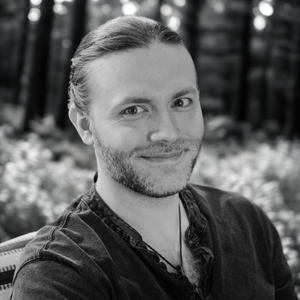
A gentle, somatic guide to tending body, mind, and inner life through the winter season. An invitation to slow down, recalibrate, and let the quieter rhythms of the cold months become a source of grounding rather than strain.
“Winter is the season that asks us to listen—
to light thinning on the branches,
to breath moving slower,
to the quiet place inside that only answers when the world grows still.”
Winter asks things of the body that other seasons don’t. The light thins. The pace shifts. The nervous system, already stretched by modern life, often tightens its boundaries, conserving energy in ways we don’t always notice.
For many people, winter is framed as something to push through—holiday chaos, end-of-year deadlines, long stretches of gray sky. But from a somatic perspective, winter is not an obstacle. It’s a rhythm. A biological request. An invitation to soften inward, tend the internal landscape, and recalibrate.
This post explores how to support the body, mind, and inner orientation through winter—using nervous-system awareness, intentional rest, and small somatic practices that help keep the system warm, steady, and attuned.
These are not hacks. They’re reminders.
The human nervous system tracks light as a primary regulator. Less daylight means shifts in hormones like melatonin and cortisol—subtle, but powerful. Many people feel:
• Lower energy
• Increased emotional sensitivity
• More difficulty focusing
• A desire for solitude
• A sense of heaviness or inwardness
Instead of pathologizing these changes, winter invites us to cooperate with them. When we stop resisting the seasonal deceleration, something opens—clarity, creativity, and a quieter kind of resilience.
This is winter embodiment: letting the body set the rhythm, not the calendar.
In colder months, many people unintentionally “float upward” into their heads. The combination of indoor life, increased screen time, and decreased movement pulls awareness away from the body.
Here are somatic practices that help bring presence downward and inward:
A few times a day, pause and sense where your weight is resting—feet, pelvis, back body.
Ask gently: Can I let myself be held a little more by gravity?
This signals safety to the nervous system.
Heat is a nervous-system ally. Warm hands, warm feet, warm tea—these all cue the body into parasympathetic (rest-and-digest) states.
This is why winter rituals often involve blankets, fires, soups: the body knows.
Long exhales mimic winter’s slower rhythm.
Try: inhale 4, exhale 6 for one minute.
It’s simple, quiet, and remarkably effective for grounding.
Hand over heart. Palm on belly.
This softens inner bracing and invites the body into a more connected posture.
These are micro-practices—not meant to overhaul your life, but to reintroduce yourself to your body.
Winter fog isn’t just weather—it’s cognitive. Many people blame themselves for being “less productive” without noticing the biological shifts underneath.
A somatically-oriented winter mindset reframes clarity as something earned through gentleness, not force.
Here are considerations for the mind:
Focus doesn’t come from tightening—it comes from regulating.
The winter brain tends to prefer cycles of 20–40 minutes of focus followed by 5–10 minutes of decompression.
Sitting by a bright window or taking a 10-minute morning walk can genuinely shift mood and reduce winter heaviness.
You wouldn’t ask a tree to bloom in January.
Letting your inner expectations match the season is a form of care.
Winter amplifies emotional content—not as punishment, but as opportunity.
When the world quiets, the inner world grows louder.
The aim is not to “fix” winter emotions, but to meet them.
“I feel tightness in my chest,” lands differently than “I’m overwhelmed.”
Time alone doesn’t have to feel like isolation if it’s framed as time with yourself.
Choose one person each week to reach out to—not to be social, but to stay tethered to human contact.
Slowly.
Quietly.
On their own timing.
The emotional body often knows how to navigate winter far better than the thinking mind.
Rituals don’t need candles, chanting, or ceremony.
In somatic work, a ritual is simply a repeated action that tells the body: “This is a moment of care.”
Some winter practices that support body/mind/soul coherence:
Soften the body, release bracing, downshift the system for sleep.
Root vegetables, slow-cooked meals, warm grains—foods that feel grounding in the belly.
Tai chi, restorative yoga, slow walks, soft stretching.
Less performance, more presence.
Instead of “What happened today?” try:
“What did my body feel today?”
“What felt tender?”
“What eased me?”
A chair near a window, a soft light, a blanket, a book.
A place the nervous system learns to exhale.
Rituals provide anchor points in a season that can feel unmoored.
“Soul” is a tricky word.
For some, it’s spiritual.
For others, it’s simply the part of them that feels meaning.
Winter often brings us face-to-face with meaning—what we’ve lost, what we long for, what feels honest.
A winter soul practice doesn’t require belief.
It simply asks that we listen.
Sitting quietly for five minutes each day is enough.
Not meditating. Not fixing. Just arriving.
Winter has a way of showing what’s been frozen.
Meeting that softening with gentleness is its own kind of integration.
Even when the world is cold, the body carries its own fire.
That’s soul work too.
If winter is a season of turning inward, Walk With Hart’s work meets clients right at that threshold.
Through body-based integration, somatic coaching, and nature-guided reconnection walks, the winter pace becomes something to partner with rather than resist.
The aim is not to push toward transformation, but to create conditions where the body and psyche can naturally realign—slowly, quietly, sustainably.
Winter is not a problem.
It’s an ecosystem.
A season designed to teach slowness, depth, and recalibration.
When tending body, mind, and inner orientation, winter becomes less of something to survive—and more of something you can genuinely belong to.

Every path branches into another. Wander through more writings on awareness, integration, and the quiet teachings of the natural world.